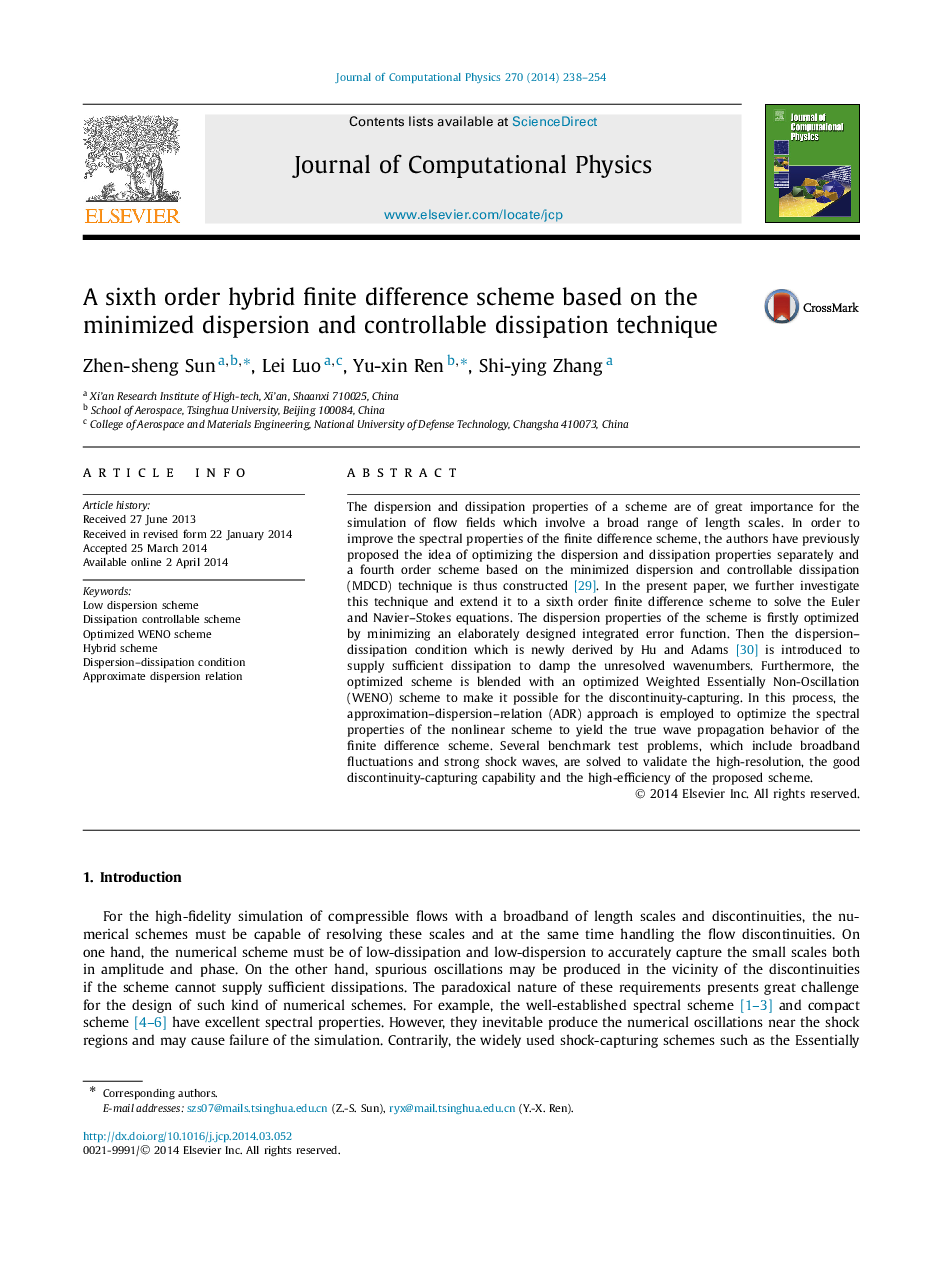| کد مقاله | کد نشریه | سال انتشار | مقاله انگلیسی | نسخه تمام متن |
|---|---|---|---|---|
| 6932566 | 867582 | 2014 | 17 صفحه PDF | دانلود رایگان |
عنوان انگلیسی مقاله ISI
A sixth order hybrid finite difference scheme based on the minimized dispersion and controllable dissipation technique
ترجمه فارسی عنوان
یک روش اختلاط محدود با ترکیب هشتم بر اساس پراکندگی به حداقل رسانده و روش تخلیه قابل کنترل است
دانلود مقاله + سفارش ترجمه
دانلود مقاله ISI انگلیسی
رایگان برای ایرانیان
کلمات کلیدی
موضوعات مرتبط
مهندسی و علوم پایه
مهندسی کامپیوتر
نرم افزارهای علوم کامپیوتر
چکیده انگلیسی
The dispersion and dissipation properties of a scheme are of great importance for the simulation of flow fields which involve a broad range of length scales. In order to improve the spectral properties of the finite difference scheme, the authors have previously proposed the idea of optimizing the dispersion and dissipation properties separately and a fourth order scheme based on the minimized dispersion and controllable dissipation (MDCD) technique is thus constructed [29]. In the present paper, we further investigate this technique and extend it to a sixth order finite difference scheme to solve the Euler and Navier-Stokes equations. The dispersion properties of the scheme is firstly optimized by minimizing an elaborately designed integrated error function. Then the dispersion-dissipation condition which is newly derived by Hu and Adams [30] is introduced to supply sufficient dissipation to damp the unresolved wavenumbers. Furthermore, the optimized scheme is blended with an optimized Weighted Essentially Non-Oscillation (WENO) scheme to make it possible for the discontinuity-capturing. In this process, the approximation-dispersion-relation (ADR) approach is employed to optimize the spectral properties of the nonlinear scheme to yield the true wave propagation behavior of the finite difference scheme. Several benchmark test problems, which include broadband fluctuations and strong shock waves, are solved to validate the high-resolution, the good discontinuity-capturing capability and the high-efficiency of the proposed scheme.
ناشر
Database: Elsevier - ScienceDirect (ساینس دایرکت)
Journal: Journal of Computational Physics - Volume 270, 1 August 2014, Pages 238-254
Journal: Journal of Computational Physics - Volume 270, 1 August 2014, Pages 238-254
نویسندگان
Zhen-sheng Sun, Lei Luo, Yu-xin Ren, Shi-ying Zhang,
